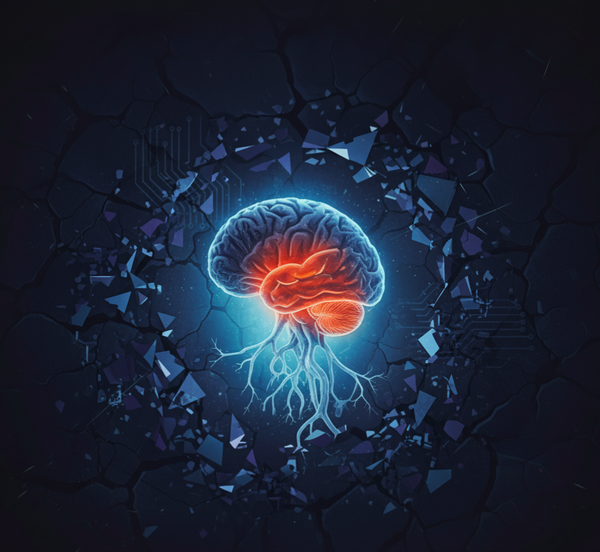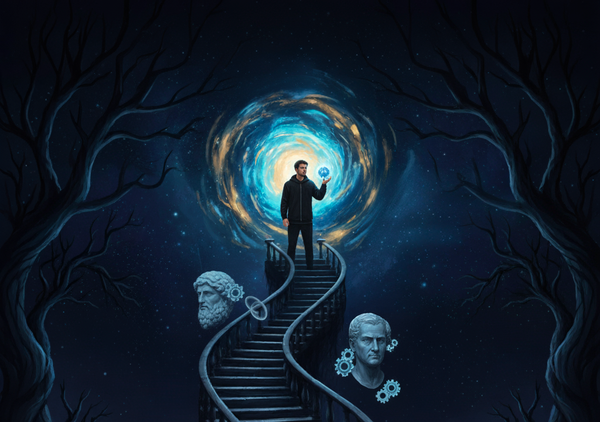The Scope of Geneosophy: Where Concept-Creation Matters

Not every domain of inquiry requires genosophical investigation. Understanding when geneosophy applies—and when traditional approaches suffice—clarifies both its potential and its proper limits.
The Traditional Domain: Working Within Given Concepts
Science, mathematics, programming, AI, and most philosophy operate successfully within what we might call "conceptually closed" domains. These fields begin each reasoning episode by assuming a stable foundation of concepts and objects, then proceed to analyze relationships within that foundation.
In physics, we start with given concepts like "particle," "field," "energy," and "spacetime." The scientific method then maps relationships between these conceptual entities: how particles interact through fields, how energy transforms according to conservation laws, how spacetime curves in response to mass-energy. The tremendous success of physics lies precisely in its ability to work systematically within this conceptual framework without questioning the genesis of the concepts themselves.
Quantum mechanics presents a more complex case that pushes at the boundaries between traditional scientific methodology and genosophical investigation. While quantum mechanics operates with mathematical formalism and predictive success—hallmarks of traditional science—it encounters phenomena that seem to resist conceptual analysis entirely. The act of quantum measurement, the collapse of superposition, the nature of quantum entanglement—these point toward pre-conceptual, pre-objectual interactions that exceed the standard concept-object structure of scientific analysis.
As Richard Feynman noted, "nobody understands quantum mechanics" precisely because our usual understanding operates through concepts and objects, while quantum phenomena appear to involve the primordial creative activity that generates concepts and objects. This suggests that quantum mechanics may be touching the same generative capacity that geneosophy investigates directly—though this deserves much fuller treatment than we can provide in this introductory discussion.
Mathematics begins with foundational concepts like "number," "function," "set," and "proof." Mathematical reasoning then explores the relationships and transformations possible within these conceptual structures. Whether we're doing calculus, topology, or abstract algebra, we operate by manipulating given mathematical objects according to established rules.
Programming languages provide another clear example. Every programming session begins with given concepts: variables, functions, loops, conditionals, data structures. Programming creativity involves novel combinations of these elements to solve specific problems, but the conceptual vocabulary itself remains fixed. Even when we create new abstractions, they're built from the established conceptual foundation of the programming language.
Philosophy, too, typically operates within conceptually closed domains. Whether we're doing ethics, epistemology, or metaphysics, we usually begin with established conceptual categories—"knowledge," "justification," "consciousness," "causation"—and then analyze their relationships. Philosophical creativity lies in discovering new arguments, distinctions, and implications within these conceptual frameworks.
The Creative Domain: Where Concepts Emerge
But there are domains where this approach breaks down completely—domains characterized by genuine conceptual creativity, where new concepts and objects are the essence of the domain.
Life: The Generator of Novelty
Life presents the paradigm case for genosophical investigation because the concept of living systems is mainly about new forms, new behaviors, new organizational patterns. Within the concept of evolution we think in terms of not just rearranging existing biological components—we think in terms of generation of genuinely novel structures, functions, and ecological relationships that couldn't be predicted from previous states.
Consider embryological development. A fertilized egg doesn't contain miniature organs that simply grow larger. Instead, it generates new cellular types, new organ systems, new functional capacities through a creative process that exceeds any mechanical combination of pre-existing elements. The concepts we use to understand development—"cell differentiation," "morphogenesis," "gene expression"—are attempts to capture a creative process that continuously outstrips our conceptual frameworks.
When biologists encounter a new form of life—extremophiles in deep-sea vents, organisms with novel metabolic pathways, unprecedented symbiotic relationships—they must often create new concepts to understand what they've discovered.
This is why purely mechanistic approaches to life always feel incomplete. Science can map correlations between genetic codes and phenotypic expressions, but it cannot explain the creative capacity that generates new forms of life in the first place. That capacity transcends the fixed concept-object structure that science operates within.
Intelligence: The Creating Capacity
Intelligence presents the other case for genosophical investigation because the concept of intelligence comprehends the capacity for creating new concepts and objects. The concept of intelligence isn't just about manipulating existing concepts—it is also about generating new ways of understanding, new distinctions, new synthetic insights.
Consider what happens in a moment of genuine understanding. You're struggling with a complex problem, working with existing concepts and methods, when suddenly a new concept emerges that allows for the reorganization of the entire problem space. This isn't just a recombination of existing conceptual elements—it's the creative generation of a new concepts that make previously impossible insights available.
Artificial intelligence research illustrates this limitation of traditional approaches. AI systems can manipulate symbols, recognize patterns, and even generate novel combinations of existing elements. But they cannot create genuinely new concepts. They work within the conceptual frameworks programmed by their creators, however sophisticated those frameworks might be.
Creativity and Innovation
Any domain characterized by genuine creativity—whether artistic, scientific, technological, or practical—points beyond the traditional approach toward genosophical investigation.
When an artist creates a genuinely original work, they're not just rearranging existing artistic elements. They're generating new ways of seeing, feeling, and meaning-making that couldn't be predicted from previous artistic categories. The concepts we use to understand art—"beauty," "expression," "representation"—always lag behind the creative works that continuously exceed them.
When scientific revolutions occur—the emergence of quantum mechanics, relativity theory, evolutionary biology—scientists must create new concepts that couldn't be derived from previous scientific frameworks. These aren't just extensions of existing concepts but genuine conceptual novelties.
Even in everyday problem-solving, moments of creative insight involve the spontaneous generation of new ways of understanding a situation that transcend the concepts we started with.
The applicability of Each Approach
This analysis reveals the proper scope of different investigative approaches:
Science, mathematics, programming, AI, and traditional philosophy excel when working within stable conceptual frameworks to map relationships between established concepts and objects. Their power lies in systematic analysis of given domains.
Geneosophy becomes necessary when investigating the very capacity that generates concepts and objects—when we need to understand creativity, life, intelligence, or any process characterized by genuine conceptual novelty.
The crucial recognition is that most traditional approaches have no space for genuine creativity because they assume their conceptual foundations rather than investigating how those foundations arise. They begin each reasoning episode with a given set of concepts and objects, then work systematically within that space.
But life and intelligence are precisely what cannot be contained within any given conceptual space.
The Methodological Distinction
This points toward a fundamental methodological distinction:
- Traditional approaches ask: "What are the relations between given concepts and objects?"
- Geneosophy asks: "How are concepts and objects made available in the first place?"
Traditional approaches analyze relationships within conceptual frameworks. Geneosophy investigates the source of conceptual frameworks themselves.
This isn't a competition between methodologies—each has its proper domain. We need physics to understand electromagnetic radiation, mathematics to work with abstract structures, programming to build computational systems, engineering to build bridges. But we need geneosophy to understand the creative capacity that makes physics, mathematics, and programming possible.
The insight is recognizing that the concept of life and intelligence aren't just more complex arrangements of matter and information. They're expressions of the same primordial creativity that generates all concepts and objects—including the concepts that science uses to study matter and the concepts that computer science uses to model information processing.
Understanding this creative source requires stepping outside the concept-object structure entirely to investigate the generative capacity that we most fundamentally are. Only from this perspective can we comprehend how both the stability of traditional domains and the creativity of living intelligence emerge from the same primordial source.




